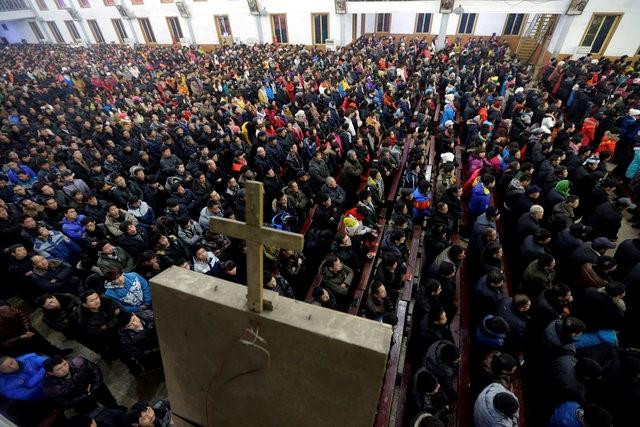Christian sites in Japan added to UNESCO World Heritage list
The 12 sites include Oura Cathedral, a Catholic church in Nagasaki

The cathedral is dedicated to 26 Christians who were executed for their beliefs over four centuries ago. PHOTO: REUTERS
The 12 sites include Oura Cathedral, a Catholic church in Nagasaki that is dedicated to 26 Christians who were executed for their beliefs over four centuries ago.
Christianity in Japan dates back to 1549, when European Jesuit missionary Francis Xavier arrived in the country with two companions and the religion began spreading in western Japan.
Japan volcano erupts for first time in 250 years
As more missionaries arrived and the faith spread, Japanese military leaders became increasingly suspicious of its growing influence and a crackdown against Christians began from 1589.
The Christians commemorated at Oura - 20 Japanese and six foreigners - were executed in Nagasaki in 1597 as the persecution intensified.
For Japanese converts, hiding their religion became a matter of life and death for the next 250 years, with Christianity banned and Japan closed to the outside world.
As they practised their faith but tried to blend in, the Christians created a blended religion that incorporated elements of Buddhism.
It wasn't until 1865 that these "hidden Christians" or Kakure Kirishtan became known outside of their communities.
A group of nervous peasants approached a French priest at Oura Cathedral and one woman whispered "our hearts are the same as yours", prompting the discovery of what turned out to be tens of thousands of Japanese Christians who had kept their faith a secret.
Gothic-style Oura, which was built in 1864 by French priests and was known by locals as the "French temple," is the oldest Christian-related building in Japan.
It was designated a national treasure by the government in 1933, but was partly damaged by the atomic bomb dropped by the US on Nagasaki on August 9, 1945, three days after the bombing of Hiroshima.
Hello Kitty-themed bullet train unveiled in Japan
The other locations in the Japanese entry include Sakitsu village in Amakusa, in southwestern Kumamoto, where Christians practiced their faith in secret in the Edo period.
The martyrdom of hidden Catholics and Jesuit missionaries in Japan in the 17th century was the subject of the 2016 Hollywood film "Silence", directed by Martin Scorsese.



















COMMENTS
Comments are moderated and generally will be posted if they are on-topic and not abusive.
For more information, please see our Comments FAQ